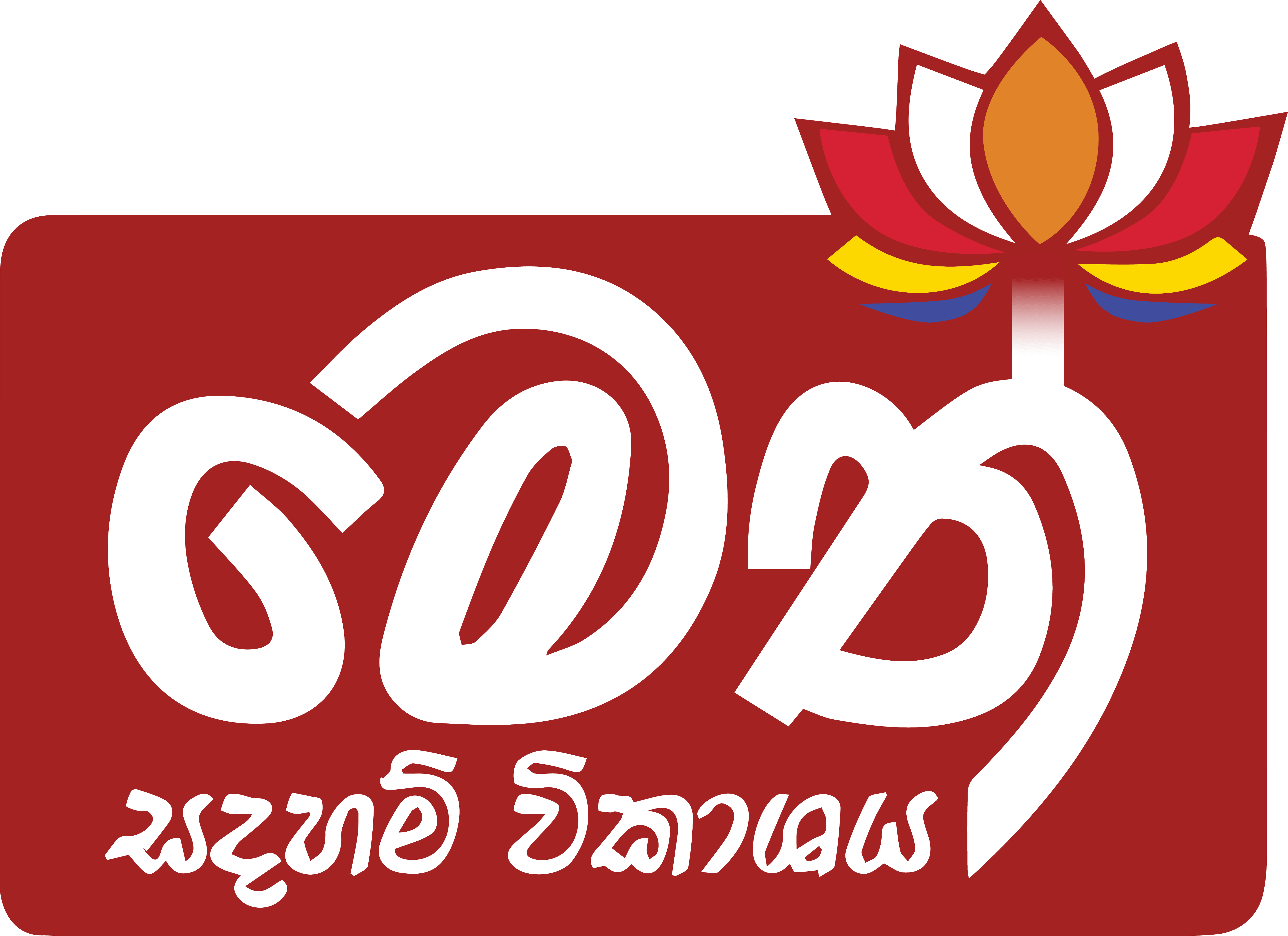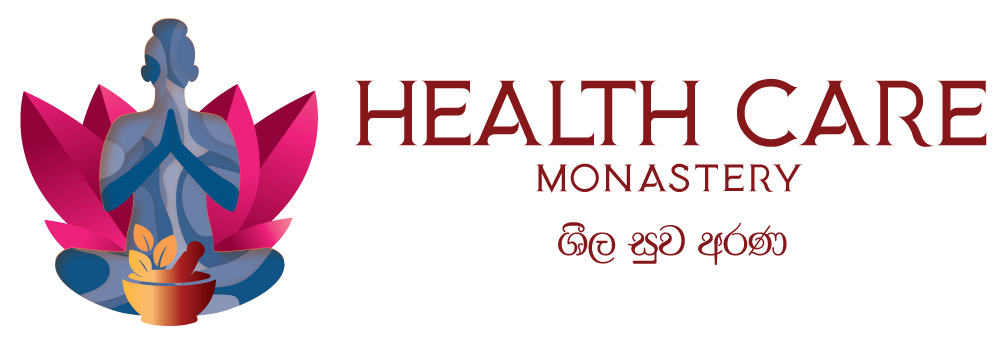Bakkula Maha Saya

Bakkula Maha Seya
- Height- 130 feet
- Shape – Bubble shaped (Bubbulakara)
Details of Relics placed in the Stupa
Sacred bodily relics and Hair relics of Lord Gauthama Buddha is deposited in the stupa.
Relics belonging to several other Arahath theros namely Bakkula Arahath Thero, Seevali Arathath Thero, and many others. Relics of Arahath Theros gifted by the Dhammakaya sacred grounds in Thailand.
Buddha statues with gems specifically gifted to the Bakkula maha seya by Sangharaja Thero of Thailand, several other Buddha statues of different poses. Ivory replicas of the four Sacred Tooth relics placed in a golden casket. A replica of the Sacred Collar Bone Relic, replica of the Sacred Forehead relic. Golden Replica of Lord Buddha’s footprint, golden Bo leaves. A replica of the Sri Maha Bodhi and many other ancient relics and Buddhist artifacts are to be placed in the Bakkula Maha Seya which is built to be gifted to the Buddhist society.
Creation
A replica of the Sri Maha Bodhi where Lord Buddha attained enlightenment is placed in the centre of the inner part of the Seya which can be viewed and worshiped by pilgrims. Meanwhile, statues of 89 Arahath Thero worshiping the Sri Maha Bodhi is also placed inside the Stupa. The holy relics will be placed in a six feet tall, large bronze casket which will be placed on Vajsana (lotus).
A statue of Bakkula Arahath Thero is to be placed inside the stupa which will be accompanied by 10 paintings depicting the life of the Arahath Thero and meritorious deeds which will educate Pilgrims of the life led and lived by Bakkula Arahath Thero.
Beneath the rings (pesha walalu) of the Stupa, structures of elephants are to be placed which is depicted in a artistic and beautiful manner. The main entrance stairway to the stupa, which is a brainchild of Galigamuwe Gnanadeepa Thero, is adorned by a clouds wall (Walakilu Bamma) with mesmerizing swan ponds on either side.

Bakkula Arahath Thero
“If someone postpones what is to be done, they close doors to heaven and nibbana while regret overpowers. If something is said, it should be done and if nothing is done is should not be said. Those who opt not to follow so, will looked down upon. If at one point to suffering of samsara is over, they shall attain the supreme bliss of nibbana preached by Lord Buddha”. This is the simple meaning of the above Gatha chanted by Bakkula Arahath Thero.
The confident thought that I am a healthy person while others are unhealthy and I shall not even suffer from a simple cold, is “aroghya madaya’ (pride). Lord Buddha has preached to Kings such as Kosol who had every luxury and riches but lacked good health, that being healthy is of highest virtue. The king’s illness was not one that was impossible to cure but due to drowsiness and lack of sleep caused by excessive consumption of food.
In several occasions, Lord Buddha has preached that a healthy life will always bring good and positive results while those who were healthy were rewarded with suitable positions thus, Bakkula Arahath thero rewarded to hold the highest position among the Healthy priests of the Buddhist ordain. It is evident by the life of Bakkula Arahath thero that simply praying for a healthy life will not bring about one but there are other meritorious deeds that enable such a healthy life.
During the time of Lord Anomadhassi Buddha, it is said that there was a boy born to a family of the Brahamin clan, who had decided to lead a life of a hermit only to “find means of a better life after death”. It is said that he had resided near the Sobhitha rock near the Himalayan range where there was a monastery constructed by his disciples. This monastery had many courts adorned beautifully along with flora and fauna that grew in abundance, it is said that wood apple, olives, belly fruit, banana, lime and lemon, Kumbuk, neem, nuga and many other valuable trees grew here. He had resided in this monastery with his disciples and followers.
Once during a pilgrimage, Anomadhassi Buddha with several of his other Arahath thero has decided to take rest near the monastery that was located near the Himalayan, and hearing this, the hermit comes to have an audience with the Buddha. This visit became a turning point for him but he doest not decide to enter the Buddhist ordain but makes several visits to Lord Anomadhassi Buddha to listen to Buddhist sermons and Dhamma discussions.
During one of his visits he learns that Lord Buddha has taken ill, where upon he takes to heart that this is the best time for him to do some meritorious deeds thus inquiring into the nature of illness Anomadhassi Buddha is suffering, decides to treat the illness. He gathers his students and explores several types of medicines and finally brings a medicine which cures the Lord Buddha. He also is determines and wishes, that with the merits he gathered by brining some solace to Lord Buddha, that he shall never succumb to any illness for a long time to come in other births as well.
In return, Lord Anomadhassi Buddha preaches as follows. If there is anyone who has treated me for my illness, may they be healthy, happy and peace until the harps of heaven play, and may they reign the world of man a good 10 times and will he not only reign this world but heaven (thawthisaa) as well. Further Lord Anomadhassi said, may he be born as Bakkula in fomrs healthier in the times of Lord Gothama Buddha. These blessing showered on Bakkula Arahath Thero in his earlier life reaped its fruits during the times of Lord Gothama Buddha.
Thus he roams the heaven and is again born among mankind during the times of Padumutthara Buddha in a high class home where he saw a priest serving in the position of high priest among healthy disciples of Buddha and wished no more than that in his later lives and he continued to live a life gaining nothing but merits. Before the birth of Lord Vipassi Buddha, Bakkula thero was born to a Brahamin family where he again lives a hermit life in the foot of a mountain. Hearing that Vipassi Buddha, he decides to visit the Buddha and to listen to his Dhamma and continues to visit the Buddha from time to time to serve him. During this time, Arahath theros were made ill due to a wind blown passing poisonous trees, the illness was diagnosed as cartarrh, this reached the hermit (Bakkula in later life) and decided to treat the condition as he was determined that it was the time for him to gather merits since he had not decided to neter the Buddhist ordain like in one of his previous births. He was able to formulate a medicine that cured the monks of the illness from the merits he gained he was born in Bamba lowa.
The next documented birth for Bakkula Thero is during Kassapa Buddha where he was born in Banares where upon reaching age, he leaves his home with carpenters in search of material to repair his then decaying house whereupon he sets eyes on a decaying temple. He then decides to repair the temple thinking ‘let the work at my house be the same, it will not accompany me in my death bed’. He completes the vihara and builds kitchenette, a washroom and other compartments which are needed.
The story of Bakkula thero begins with his birth in the village of Kosabhe to a mother who had longed for children. Upon his birth, he was taken to Yamuna river for a bath where he slips off the hands of the maid in to the deep river and a large fish takes the child away. Efforts to find the child goes in vain and the parents are deeply saddened by the loss of the child they prayed and longed so much. The fish was later caught by fisherman residing in a village down the river. The fishermen travelled the village to sell the enormous fish which was purchased by another wealthy family. As they cut open the fish, the child who was well and alive was found, which was overwhelming to the family.
The story of the child who was born out of the fish in Banares travelled to the far villages and reached the ears of the birth mother who travelled from Banares to take custody of the child. However, both family had to visit the King to take custody of the child and the verdict was that the child shall belong to both families, thus he who belonged to two castes became Bakkula which means belonging to two castes.
As he became of age, he had luxurious mansions in both villages where he travelled from one village to the other, along the River Yamuna with an entourage of dancers, actors and other performers, it was a procession that travelled with him. He would reside in one village for several months and travel to the other and on one of his visits to Kosabhe, he heard of Lord Buddha’s arrival and decides to seek an audience with Lord Buddha. After taking part in Lord Buddha’s Dhamma sermons, Bakkula decides to enter the Buddhist ordain. It is said that, it took him only 8 days to attain the Supreme bliss of Nibbana. The women that lived in the two villages would weave robes where the thero would visit the villages every four months to use the robes and he would also gift the robes to Lord Buddha too.
On one occasion the venerable Bakkula was living at Rajagaha in the Bamboo Grove, at the Squirrels Sanctuary. Then Acela Kassapa, a former companion of the venerable Bakkula in his lay life, went to the venerable Bakkula and exchanged greetings with him. When this courteous and amiable talk was finished, he sat down at one side and asked the venerable Bakkula:
“Friend Bakkula, how long is it since you went forth?” “It is eighty years since I went forth, friend.” “Friend Bakkula, in these eighty years how many times have you engaged sexually?”
“Friend Kassapa, you should not ask me such a question as that. You should ask me a question as this: ‘Friend Bakkula, in these eighty years how many times have perceptions of sensual desire arisen in you?”
“Friend Bakkula, in these eighty years how many times have perceptions of sensual desire arisen in you?” “Friend Kassapa, in the eighty years since I went forth I do not recall any perception of sensual desire to have ever arisen in me.”
“Friend, in the eighty years since I went forth I do not recall any perception of ill will…any perception of cruelty to have ever arisen in me.”
“Friend, in the eighty years since I went forth I do not recall ever having accepted a robe from a householder…ever having cut a robe with a cutter…ever having sewn a robe with a needle…ever having colored a robe with dye…ever having sewn a robe at the kathina time…ever having worked on making robes for my companions in the holy life.”
“Friend, in the eighty years since I went forth I do not recall ever having accepted an invitation to a meal…ever having given rise to the thought: ‘Oh, may someone invite me to a meal!’…Ever having sat down inside a house…ever having eaten inside a house.”
“Friend, in the eighty years since I went forth I do not recall having grasped at the signs and features of a woman…ever having taught the Dhamma to a woman, even as much as a four-line stanza…ever having gone to the Bhikkhunís quarters…ever having taught the Dhamma to a Bhikkhuní…ever having taught the Dhamma to a female probationer…ever having taught the Dhamma to a female novice.”
“Friend, in the eighty years since I went forth I do not recall ever having given the going forth…ever having given the full admission…ever having had a novice wait on me.”
“Friend, in the eighty years since I went forth I do not recall ever having bathed in a bath house…ever having bathed with bath powder…ever having undertaking the work of massaging the limbs of my companions in the holy life…
“Friend, for seven days after going forth I ate the country’s alms-food as a debtor; on the eighth day final knowledge arose.”
Then Acela Kassapa said: “I would receive the going forth in this Dhamma and Discipline, I would receive the full admission.” And Acela Kassapa received the going forth in this Dhamma and Discipline he received the full admission. And soon, not long after his full admission, dwelling alone, withdrawn, diligent, ardent, and resolute, the venerable Kassapa, by realizing for himself with direct knowledge, here and now entered upon and abided in that supreme goal of the holy life for the sake of which clansmen rightly go forth from the home life into homelessness.
He knew directly: “Birth is destroyed, the holy life has been lived, what had to be done has been done, there is no more coming to any state of being.” And the venerable Kassapa became one of the Arahants. Then, on a later occasion, the venerable Bakkula took a key and went from cell to cell, saying, “come forth, venerable sirs; come forth, venerable sirs. Today I shall attain final Nibbána.
Not long afterwards Bakkula Thero took a bunch of keys and went from one dwelling to the other saying, ‘Friends, come! Today will be my final extinction. This was also one great quality possessed by Bakkula Thero.
‘Friends, come! Today will be my final extinction. I bear this too’, Bakkula Thero attained final extinction midst of the Bhikkhus community. It was his wish that he be of no burden to the other monks after hi demise, in a similarly to how he lived his life and amazingly at his death, what was left were small particles of relics like flower buds as his body set ablaze.
One, King Ashoka you reined during the Dharmashoka went on a task to renovate stupas, and he donated funds for the renovation of the Stupas that had relics of Sariyuth and Mugalan arahath theros but as he approached the stupa with the relics of Bakkula thero, the kings had his reservation thinking, ‘he is a true arahath thero who attained Nibbana, he was the healthiest among all but has never preached a dhamma sermon nor worked towards the betterment of other thus the king leaves a penny at the stupa which miraculously returns to the feet of the Kings where upon the King donates a large sum for the renovation of the stupa.
Bakkula thero did not work towards personal gain but for the betterment of other beings thus with the merits gathered from his before lives. It must be remembered that tiniest acts of kindness and good deeds are undoubtedly miraculous.
Bakkula Saya Construction Timeline
 | Sampath Bank – Athurugiriya branch Account – Bakkula Maha Saya Number – 0067 6000 0076 |
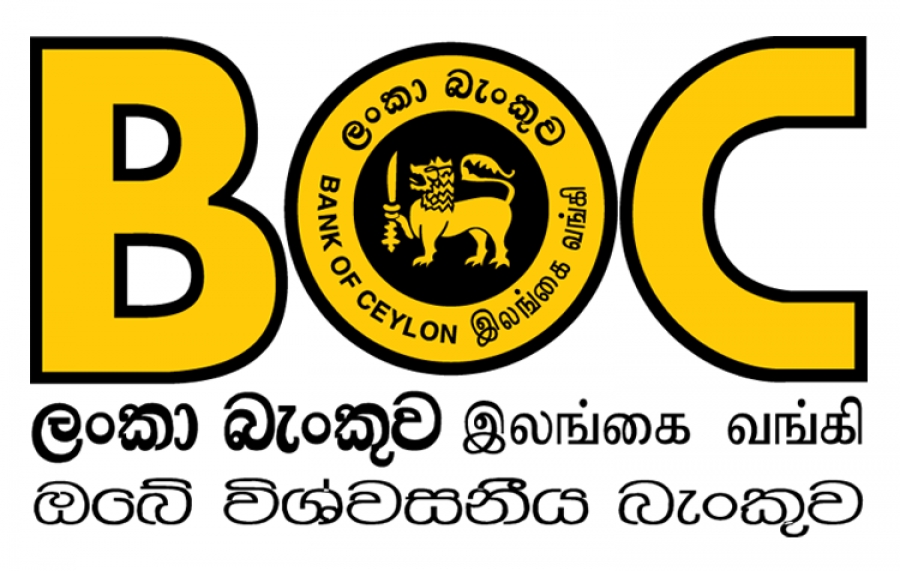 | Bank of Ceylon (BOC) – Metropolitant branch Account – Bakkula Maha Saya Number – 8010 1773 |
ඇතැම් රටවල සැදැහැවතුන් හට එම ගිණුම් වෙත ඔබේ මුදල් පරිත්යාග කිරීමට
තාක්ෂණික අපහසුතා ඇත්නම් පහත ගිණුමට ඔබේ මුදල් පරිත්යාග කරන්න.
 | Hatton National Bank- Athurugiriya branch Account – Galigamuwe Gnanadeepa Thero Number – 1540 2005 9835 |
Make your donations online

- About Bakkula Saya

Bakkula Maha Seya
- Height- 130 feet
- Shape – Bubble shaped (Bubbulakara)
Details of Relics placed in the Stupa
Sacred bodily relics and Hair relics of Lord Gauthama Buddha is deposited in the stupa.
Relics belonging to several other Arahath theros namely Bakkula Arahath Thero, Seevali Arathath Thero, and many others. Relics of Arahath Theros gifted by the Dhammakaya sacred grounds in Thailand.
Buddha statues with gems specifically gifted to the Bakkula maha seya by Sangharaja Thero of Thailand, several other Buddha statues of different poses. Ivory replicas of the four Sacred Tooth relics placed in a golden casket. A replica of the Sacred Collar Bone Relic, replica of the Sacred Forehead relic. Golden Replica of Lord Buddha’s footprint, golden Bo leaves. A replica of the Sri Maha Bodhi and many other ancient relics and Buddhist artifacts are to be placed in the Bakkula Maha Seya which is built to be gifted to the Buddhist society.
Creation
A replica of the Sri Maha Bodhi where Lord Buddha attained enlightenment is placed in the centre of the inner part of the Seya which can be viewed and worshiped by pilgrims. Meanwhile, statues of 89 Arahath Thero worshiping the Sri Maha Bodhi is also placed inside the Stupa. The holy relics will be placed in a six feet tall, large bronze casket which will be placed on Vajsana (lotus).
A statue of Bakkula Arahath Thero is to be placed inside the stupa which will be accompanied by 10 paintings depicting the life of the Arahath Thero and meritorious deeds which will educate Pilgrims of the life led and lived by Bakkula Arahath Thero.
Beneath the rings (pesha walalu) of the Stupa, structures of elephants are to be placed which is depicted in a artistic and beautiful manner. The main entrance stairway to the stupa, which is a brainchild of Galigamuwe Gnanadeepa Thero, is adorned by a clouds wall (Walakilu Bamma) with mesmerizing swan ponds on either side.
- Bakkula Maha Rahathan

Bakkula Arahath Thero
“If someone postpones what is to be done, they close doors to heaven and nibbana while regret overpowers. If something is said, it should be done and if nothing is done is should not be said. Those who opt not to follow so, will looked down upon. If at one point to suffering of samsara is over, they shall attain the supreme bliss of nibbana preached by Lord Buddha”. This is the simple meaning of the above Gatha chanted by Bakkula Arahath Thero.
The confident thought that I am a healthy person while others are unhealthy and I shall not even suffer from a simple cold, is “aroghya madaya’ (pride). Lord Buddha has preached to Kings such as Kosol who had every luxury and riches but lacked good health, that being healthy is of highest virtue. The king’s illness was not one that was impossible to cure but due to drowsiness and lack of sleep caused by excessive consumption of food.
In several occasions, Lord Buddha has preached that a healthy life will always bring good and positive results while those who were healthy were rewarded with suitable positions thus, Bakkula Arahath thero rewarded to hold the highest position among the Healthy priests of the Buddhist ordain. It is evident by the life of Bakkula Arahath thero that simply praying for a healthy life will not bring about one but there are other meritorious deeds that enable such a healthy life.
During the time of Lord Anomadhassi Buddha, it is said that there was a boy born to a family of the Brahamin clan, who had decided to lead a life of a hermit only to “find means of a better life after death”. It is said that he had resided near the Sobhitha rock near the Himalayan range where there was a monastery constructed by his disciples. This monastery had many courts adorned beautifully along with flora and fauna that grew in abundance, it is said that wood apple, olives, belly fruit, banana, lime and lemon, Kumbuk, neem, nuga and many other valuable trees grew here. He had resided in this monastery with his disciples and followers.
Once during a pilgrimage, Anomadhassi Buddha with several of his other Arahath thero has decided to take rest near the monastery that was located near the Himalayan, and hearing this, the hermit comes to have an audience with the Buddha. This visit became a turning point for him but he doest not decide to enter the Buddhist ordain but makes several visits to Lord Anomadhassi Buddha to listen to Buddhist sermons and Dhamma discussions.
During one of his visits he learns that Lord Buddha has taken ill, where upon he takes to heart that this is the best time for him to do some meritorious deeds thus inquiring into the nature of illness Anomadhassi Buddha is suffering, decides to treat the illness. He gathers his students and explores several types of medicines and finally brings a medicine which cures the Lord Buddha. He also is determines and wishes, that with the merits he gathered by brining some solace to Lord Buddha, that he shall never succumb to any illness for a long time to come in other births as well.
In return, Lord Anomadhassi Buddha preaches as follows. If there is anyone who has treated me for my illness, may they be healthy, happy and peace until the harps of heaven play, and may they reign the world of man a good 10 times and will he not only reign this world but heaven (thawthisaa) as well. Further Lord Anomadhassi said, may he be born as Bakkula in fomrs healthier in the times of Lord Gothama Buddha. These blessing showered on Bakkula Arahath Thero in his earlier life reaped its fruits during the times of Lord Gothama Buddha.
Thus he roams the heaven and is again born among mankind during the times of Padumutthara Buddha in a high class home where he saw a priest serving in the position of high priest among healthy disciples of Buddha and wished no more than that in his later lives and he continued to live a life gaining nothing but merits. Before the birth of Lord Vipassi Buddha, Bakkula thero was born to a Brahamin family where he again lives a hermit life in the foot of a mountain. Hearing that Vipassi Buddha, he decides to visit the Buddha and to listen to his Dhamma and continues to visit the Buddha from time to time to serve him. During this time, Arahath theros were made ill due to a wind blown passing poisonous trees, the illness was diagnosed as cartarrh, this reached the hermit (Bakkula in later life) and decided to treat the condition as he was determined that it was the time for him to gather merits since he had not decided to neter the Buddhist ordain like in one of his previous births. He was able to formulate a medicine that cured the monks of the illness from the merits he gained he was born in Bamba lowa.
The next documented birth for Bakkula Thero is during Kassapa Buddha where he was born in Banares where upon reaching age, he leaves his home with carpenters in search of material to repair his then decaying house whereupon he sets eyes on a decaying temple. He then decides to repair the temple thinking ‘let the work at my house be the same, it will not accompany me in my death bed’. He completes the vihara and builds kitchenette, a washroom and other compartments which are needed.
The story of Bakkula thero begins with his birth in the village of Kosabhe to a mother who had longed for children. Upon his birth, he was taken to Yamuna river for a bath where he slips off the hands of the maid in to the deep river and a large fish takes the child away. Efforts to find the child goes in vain and the parents are deeply saddened by the loss of the child they prayed and longed so much. The fish was later caught by fisherman residing in a village down the river. The fishermen travelled the village to sell the enormous fish which was purchased by another wealthy family. As they cut open the fish, the child who was well and alive was found, which was overwhelming to the family.
The story of the child who was born out of the fish in Banares travelled to the far villages and reached the ears of the birth mother who travelled from Banares to take custody of the child. However, both family had to visit the King to take custody of the child and the verdict was that the child shall belong to both families, thus he who belonged to two castes became Bakkula which means belonging to two castes.
As he became of age, he had luxurious mansions in both villages where he travelled from one village to the other, along the River Yamuna with an entourage of dancers, actors and other performers, it was a procession that travelled with him. He would reside in one village for several months and travel to the other and on one of his visits to Kosabhe, he heard of Lord Buddha’s arrival and decides to seek an audience with Lord Buddha. After taking part in Lord Buddha’s Dhamma sermons, Bakkula decides to enter the Buddhist ordain. It is said that, it took him only 8 days to attain the Supreme bliss of Nibbana. The women that lived in the two villages would weave robes where the thero would visit the villages every four months to use the robes and he would also gift the robes to Lord Buddha too.
On one occasion the venerable Bakkula was living at Rajagaha in the Bamboo Grove, at the Squirrels Sanctuary. Then Acela Kassapa, a former companion of the venerable Bakkula in his lay life, went to the venerable Bakkula and exchanged greetings with him. When this courteous and amiable talk was finished, he sat down at one side and asked the venerable Bakkula:
“Friend Bakkula, how long is it since you went forth?” “It is eighty years since I went forth, friend.” “Friend Bakkula, in these eighty years how many times have you engaged sexually?”
“Friend Kassapa, you should not ask me such a question as that. You should ask me a question as this: ‘Friend Bakkula, in these eighty years how many times have perceptions of sensual desire arisen in you?”
“Friend Bakkula, in these eighty years how many times have perceptions of sensual desire arisen in you?” “Friend Kassapa, in the eighty years since I went forth I do not recall any perception of sensual desire to have ever arisen in me.”
“Friend, in the eighty years since I went forth I do not recall any perception of ill will…any perception of cruelty to have ever arisen in me.”
“Friend, in the eighty years since I went forth I do not recall ever having accepted a robe from a householder…ever having cut a robe with a cutter…ever having sewn a robe with a needle…ever having colored a robe with dye…ever having sewn a robe at the kathina time…ever having worked on making robes for my companions in the holy life.”
“Friend, in the eighty years since I went forth I do not recall ever having accepted an invitation to a meal…ever having given rise to the thought: ‘Oh, may someone invite me to a meal!’…Ever having sat down inside a house…ever having eaten inside a house.”
“Friend, in the eighty years since I went forth I do not recall having grasped at the signs and features of a woman…ever having taught the Dhamma to a woman, even as much as a four-line stanza…ever having gone to the Bhikkhunís quarters…ever having taught the Dhamma to a Bhikkhuní…ever having taught the Dhamma to a female probationer…ever having taught the Dhamma to a female novice.”
“Friend, in the eighty years since I went forth I do not recall ever having given the going forth…ever having given the full admission…ever having had a novice wait on me.”
“Friend, in the eighty years since I went forth I do not recall ever having bathed in a bath house…ever having bathed with bath powder…ever having undertaking the work of massaging the limbs of my companions in the holy life…
“Friend, for seven days after going forth I ate the country’s alms-food as a debtor; on the eighth day final knowledge arose.”
Then Acela Kassapa said: “I would receive the going forth in this Dhamma and Discipline, I would receive the full admission.” And Acela Kassapa received the going forth in this Dhamma and Discipline he received the full admission. And soon, not long after his full admission, dwelling alone, withdrawn, diligent, ardent, and resolute, the venerable Kassapa, by realizing for himself with direct knowledge, here and now entered upon and abided in that supreme goal of the holy life for the sake of which clansmen rightly go forth from the home life into homelessness.
He knew directly: “Birth is destroyed, the holy life has been lived, what had to be done has been done, there is no more coming to any state of being.” And the venerable Kassapa became one of the Arahants. Then, on a later occasion, the venerable Bakkula took a key and went from cell to cell, saying, “come forth, venerable sirs; come forth, venerable sirs. Today I shall attain final Nibbána.
Not long afterwards Bakkula Thero took a bunch of keys and went from one dwelling to the other saying, ‘Friends, come! Today will be my final extinction. This was also one great quality possessed by Bakkula Thero.
‘Friends, come! Today will be my final extinction. I bear this too’, Bakkula Thero attained final extinction midst of the Bhikkhus community. It was his wish that he be of no burden to the other monks after hi demise, in a similarly to how he lived his life and amazingly at his death, what was left were small particles of relics like flower buds as his body set ablaze.
One, King Ashoka you reined during the Dharmashoka went on a task to renovate stupas, and he donated funds for the renovation of the Stupas that had relics of Sariyuth and Mugalan arahath theros but as he approached the stupa with the relics of Bakkula thero, the kings had his reservation thinking, ‘he is a true arahath thero who attained Nibbana, he was the healthiest among all but has never preached a dhamma sermon nor worked towards the betterment of other thus the king leaves a penny at the stupa which miraculously returns to the feet of the Kings where upon the King donates a large sum for the renovation of the stupa.
Bakkula thero did not work towards personal gain but for the betterment of other beings thus with the merits gathered from his before lives. It must be remembered that tiniest acts of kindness and good deeds are undoubtedly miraculous.
- Construction Timeline
Bakkula Saya Construction Timeline
- Image Gallery
- Donations

Sampath Bank – Athurugiriya branch
Account – Bakkula Maha Saya
Number – 0067 6000 0076
Bank of Ceylon (BOC) – Metropolitant branch
Account – Bakkula Maha Saya
Number – 8010 1773ඇතැම් රටවල සැදැහැවතුන් හට එම ගිණුම් වෙත ඔබේ මුදල් පරිත්යාග කිරීමට
තාක්ෂණික අපහසුතා ඇත්නම් පහත ගිණුමට ඔබේ මුදල් පරිත්යාග කරන්න.
Hatton National Bank- Athurugiriya branch
Account – Galigamuwe Gnanadeepa Thero
Number – 1540 2005 9835Make your donations online




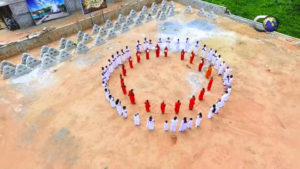 December 2016
December 2016  December 2016
December 2016 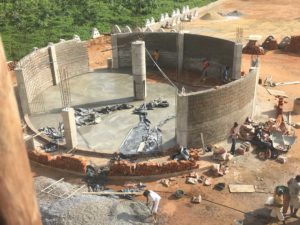 July 2017
July 2017 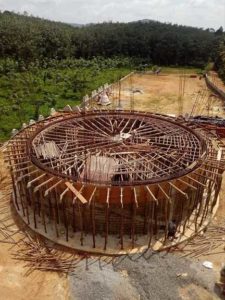 September 2017
September 2017 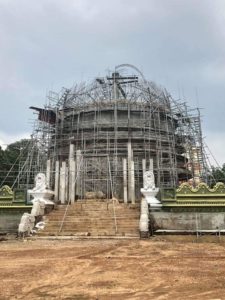 June 2019
June 2019  May 2017
May 2017 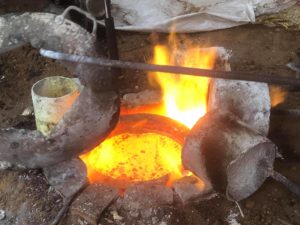 October 2018
October 2018 